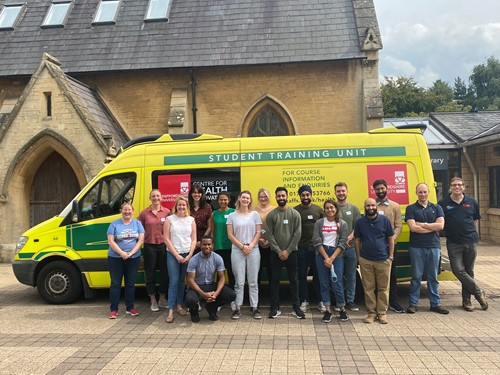Stoke-on-Trent School of Anaesthesia and Staffordshire University collaborate for the first time to deliver anaesthetic transfer training course

University Hospitals of North Midlands has joined forces with Staffordshire University to offer ‘real life’ anaesthetic transfer training course for the first time.
The state of the art facilities at UHNM’s Postgraduate Medical Centre (PGMC) at County Hospital, Stafford together with the UHNM-based Stoke-on-Trent School of Anaesthesia collaborated for the first time with the Staffordshire University Simulation and Patient Safety team to deliver the course which aims to teach anaesthetic doctors in training how to transfer critically ill patients during hospital transfers.
The team from Staffordshire University provided a working ambulance, technician, manikin, kit bags, defibrillator and portable ventilator and the Extended Reality Laboratory at the PGMC, provides a projection simulation space creating real life scenarios.
Using these resources allow learners to experience what to expect when transferring in hospital, ambulance and helicopter by mimicking ward, resus area or pre-hospital environment such as roadside or air ambulance.
Dr Felicity Avann and Dr Ben Taylor, both Consultant Anaesthetists at UHNM led the one-day course. Dr Avann said: “The new Stoke-on-Trent School of Anaesthesia transfer training course aims to teach anaesthetic doctors in training how to transfer critically ill patients during hospital transfers. It consists mainly of practical, interactive and simulation based sessions which focus on communication, team working and decision making.
“Having access to the Staffordshire University ambulance really helped in teaching key points and was very well received by the doctors in training. I am very pleased it has received such positive feedback and the Faculty hope it has given a good basis for further transfer experience and development.”
The course received positive feedback from attendees, highlighting the extra resource of the ambulance and technician provided a ‘real life’ transfer scenario.